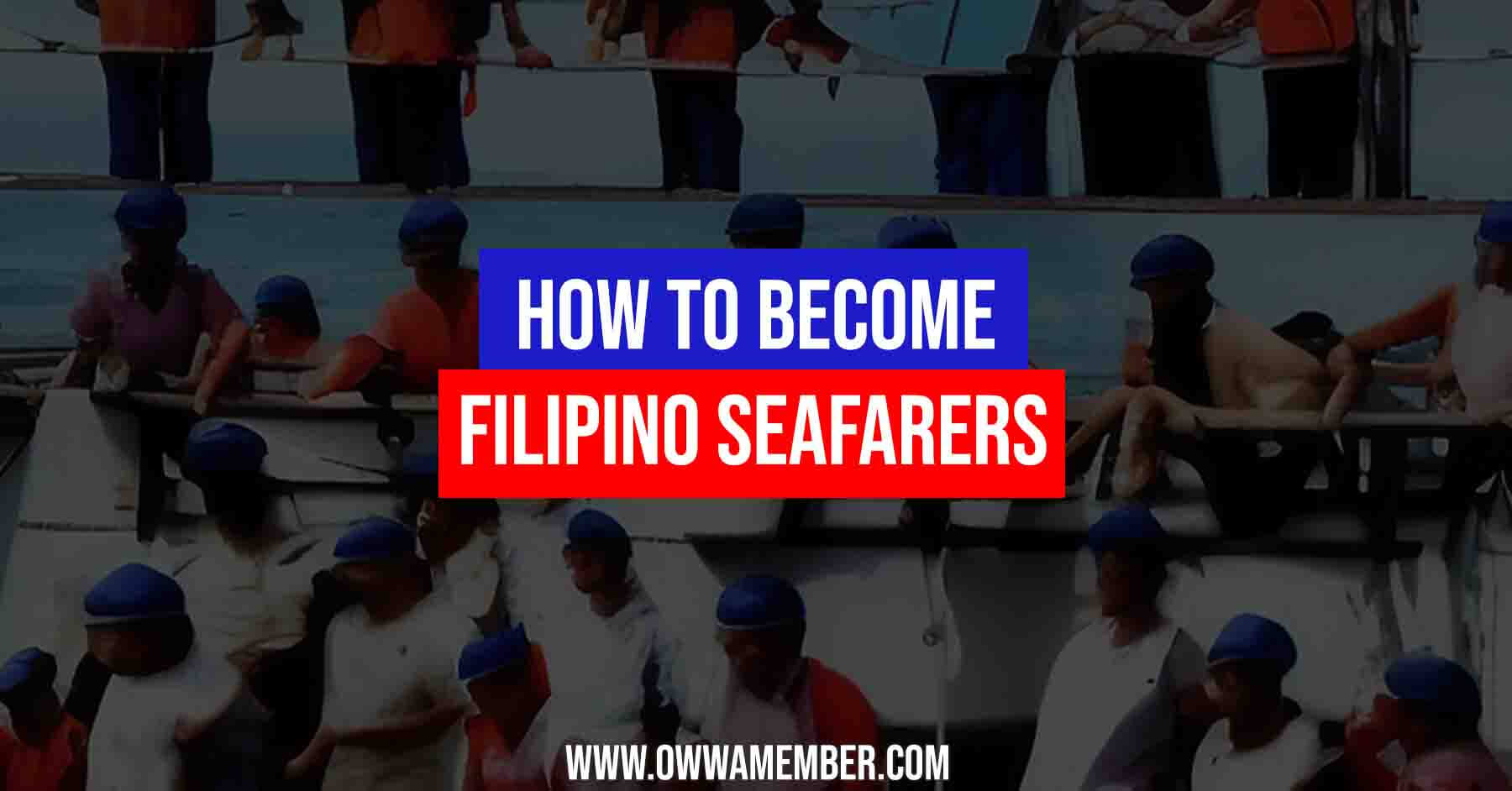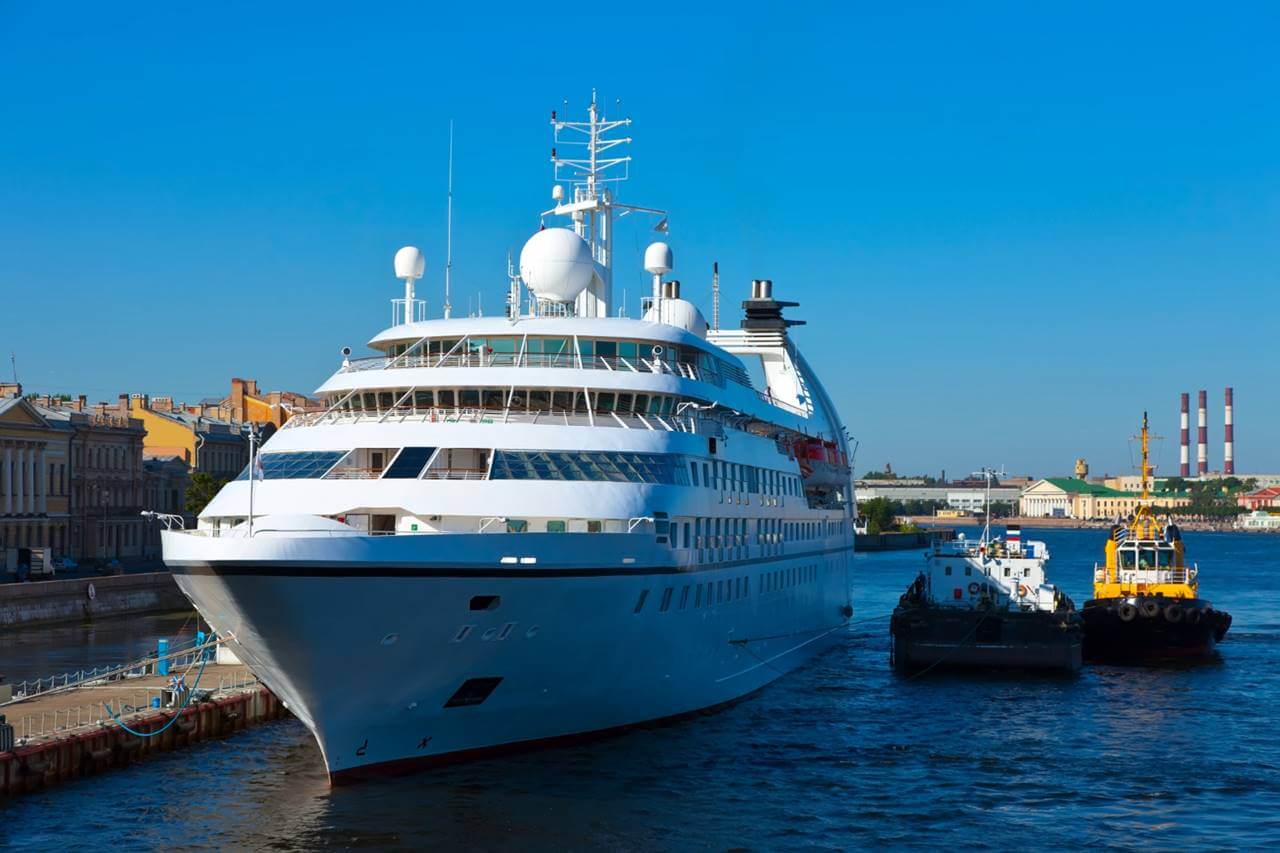OFW seafarers or Overseas Filipino Workers in the maritime industry are widely recognized as some of the most hardworking, skilled, and resilient workers in the world. They go through rigorous training and face many challenges while at sea, but their sacrifices and hard work provide essential services to ensure international trade runs smoothly.
Also Read: How to Become an OWWA Member?
Filipino seafarers are an invaluable commodity to the Philippines. Not only do they bring in much-needed money from abroad, but they help to keep Philippine economy stable. Seafarers provide a steady stream of income to local and international businesses, ship owners, and insurance companies. Moreover, their work helps ensure that goods and products move quickly and safely around the world.
To become a seafarer, one must first have a basic understanding of maritime terminology and regulations, as well as experience in seamanship. Then they must undergo training to acquire the necessary skills needed for the job.
Philippine-based agencies and companies are always looking for competent and highly skilled candidates with reliable backgrounds. This is why Filipino seafarers have become some of the most sought-after in the world. Their talents, skills and dedication to the job are highly regarded by employers in all corners of the globe.
Contents
- What is a Seafarer?
- What is a Seafarer in the Philippines?
- 10 Reasons Why There are Many Filipino Seafarers
- Benefits of the Seafarer Job for Men and Women
- How to Become a Seafarer in the Philippines
- Pros and Cons of Being a Seafarer
- Agencies for Seafarers in the Philippines
- Seafarers vs OFWs – What’s the Difference?
- Video: How to Become a Seafarer Guide
- Frequently Asked Questions
- 1. What are the job opportunities for seafarers?
- 2. What are the requirements to become a seafarer?
- 3. What are the benefits of being a seafarer?
- 4. How much do seafarers earn?
- 5. What are the risks associated with being a seafarer?
- 6. How long do seafarers work on a ship?
- 7. How is seafaring regulated in the Philippines?
- 8. Do seafarers have access to medical care while at sea?
- 9. What are the famous seafaring routes in the Philippines?
- 10. What are the challenges that seafarers face while on board?
- Summary

What is a Seafarer?
A seafarer is someone who is employed to work on a ship, whether it’s a cargo vessel, a cruise ship, or any other type of vessel that requires manpower to operate. They are responsible for different tasks on a ship such as navigation, maintenance, cargo operations, cooking, and cleaning.
Seafarers can work for different periods, ranging from a few months to more extended periods of up to a year or two, depending on the type of contract they have.
What is a Seafarer in the Philippines?
Seafarers in the Philippines refer to Filipino workers who serve at sea or engaged in seafaring. The maritime industry is one of the significant contributors to the Philippine economy, with Filipino seafarers being the top manpower country where a considerable number of seafarers are from. Seafaring is a common way for Filipinos to seek job opportunities outside the country due to its high demand, competitive salaries, and benefits.
10 Reasons Why There are Many Filipino Seafarers
Here are ten reasons why many Filipinos opt to become seafarers:
- Increasing demand for qualified seafarers globally – Countries with a seafaring tradition or an expanding maritime industry like the Philippines, are a vital source of human talent.
- Competitive Salaries with tax-free income offer a chance to save money, invest, and support their families back home.
- Career advancement opportunities – Seafarers can climb the career ladder and, as they gain more experience and acquire more qualifications, can expect to command higher salaries and better job offers.
- Travel/Globetrotting – Traveling to new and exotic places is one reason that many seafarers opt for a maritime career.
- Adventure and excitement – Being a seafarer involves more than just sailing from port to port, there are many exciting opportunities for exploring new places and meeting different people.
- Social interaction and learning new skills – Seafarers come from diverse backgrounds and work together, building valuable teamwork skills, cultural awareness and adaptability.
- Job security – Carriers, tankers, and other seafaring vessels always need a crew, so seafarers can expect job security and stability.
- Alternative to the High Unemployment Rate – In some cases, seafaring is an excellent option for unemployed Filipinos or a way to finance college education for themselves or their siblings.
- Love for the sea – Given the Philippines’ geographical location, the sea is a significant part of its culture, and many Filipinos have grown up with a love for the sea.
- Filipino seafarers are highly valued for their competencies, experience, and professionalism.
Benefits of the Seafarer Job for Men and Women
Filipino seafarers enjoy an array of benefits. Here are some of them:
- Competitive Salaries – Seafarers are offered tax-free income, which means they can save more of what they earn. An ordinary seafarer can earn around $1,000 to $5,000 per month, depending on the rank.
- Medical Benefits – Seafarers can access healthcare services from their employers.
- Pension Plan – Most seafarers are entitled to a pension plan after retirement.
- Travel – Seafarers can visit other countries, seek adventure, and explore new cultures.
How to Become a Seafarer in the Philippines
Here is a step-by-step guide on how to become a seafarer in the Philippines.
- Complete Senior High School – A high school diploma is a minimum requirement to become a seafarer.
- Enroll in a Maritime Academy – There are over 100 Maritime Training Centers in the Philippines that offer courses for aspiring seafarers.
- Undergo Maritime Training – Seafarers must undergo mandatory Basic Safety Training (BST), Personal Survival Techniques (PST), and Marine Pollution Prevention and Response (MPPR) courses.
- Obtain a Seafarer’s Identification and Record Book (SIRB) or ID – This is the document that serves as a seafarer’s passport.
- Look for Job Openings – Seafarers can apply for job postings on various job sites or through employment agencies that specialize in recruiting seafarers.
- Attend Pre-Employment Seminars – Seafarers must attend pre-employment seminars that provide essential information about their employment contracts and what’s expected of them.
- Secure Medical and Other Necessary Certificates – Seafarers must have a medical certificate, drug test results, and other certificates or licenses required by their employers.

Pros and Cons of Being a Seafarer
Here are some of the pros and cons of being a seafarer:
Pros
- Competitive salaries with a tax-free income
- Opportunities for career advancement
- On-the-job training and continued learning
- Job security and stability
- Opportunity to travel to various places worldwide
- Experience working with people from different cultures and backgrounds
Cons
- Long periods away from family and loved ones
- Health risks associated with the job
- Exposure to extreme weather conditions
- Limited access to medical care while at sea
- The highly demanding and stressful nature of the job
Agencies for Seafarers in the Philippines
Here are ten agencies in the Philippines that seafarers can consider when looking for job opportunities:
- Magsaysay Maritime Corporation
- Philippine Transmarine Carriers
- NYK-Fil Ship Management
- Eastern Mediterranean Manning Agency
- Pacific Ocean Manning, Inc.
- Mitsui OSK Lines Maritime Services (Philippines)
- CF Sharp Crew Management
- IMS Philippines Maritime Corporation
- C.F. Sharp Recruitment Agency
- United Philippine Lines
Note: Please note that the above list of agencies may change without prior notice. Check with your local area for the most recent list of seafaring agencies.
Also Read: How to Process Employment Contract Verification for OFWs
Seafarers vs OFWs – What’s the Difference?
Many people may be wondering if what’s the difference between a seafarer and an Overseas Filipino Worker (OFW). The short answer is that seafarers are employed in the maritime sector while OFWs work abroad and are land-based.
They have similarities but they are two different kinds of work. Seafarers work on ships, while OFWs (Overseas Filipino Workers) work in land-based foreign countries and locations. Both require going away from home for prolonged periods but the working conditions are very different.
OFWs usually have access to better living conditions, healthcare services, and recreational activities compared to seafarers who live, eat, and sleep in a restricted workplace environment (ship) with limited entertainment options.
But be advised that seafarers are also considered OFWs since they “work overseas”. But for Philippine government definitions, they are differentiated from each other.
Video: How to Become a Seafarer Guide
Check out this video clip which features one of our kababayans detailing the process of becoming a seafarer. Learn about how to get the proper training, certifications, and other requirements to be able to work at sea.
https://www.youtube.com/watch?v=7VYQd8WyyDE
Frequently Asked Questions
Here are some of the most frequently asked questions about seafarers in the Philippines:
1. What are the job opportunities for seafarers?
Seafarers can work on different types of vessels like cargo ships, tankers, passenger vessels, offshore platforms, and workboats. They can work as deck officers, engine officers, or catering crew members.
2. What are the requirements to become a seafarer?
To become a seafarer, you need a high school diploma, undergo mandatory maritime training, pass the licensure exam administered by the Maritime Industry Authority (MARINA), secure a Seafarer’s Identification and Record Book (SIRB), and obtain necessary certificates or licenses required by employers.
3. What are the benefits of being a seafarer?
The benefits of being a seafarer include competitive salaries with tax-free income, medical benefits, pension plans, and travel opportunities.
4. How much do seafarers earn?
An ordinary seafarer can earn around $1,000 to $5,000 per month, depending on their rank and vessel type.
5. What are the risks associated with being a seafarer?
Risks associated with being a seafarer include long periods away from family and loved ones, health risks related to the job, exposure to extreme weather conditions, and limited access to medical care while at sea.
6. How long do seafarers work on a ship?
Seafarers can work for different periods, ranging from a few months to more extended periods of up to a year or two, depending on the type of contract they have.
7. How is seafaring regulated in the Philippines?
Seafaring in the Philippines is regulated by the Maritime Industry Authority (MARINA), which monitors and regulates the maritime industry and sets guidelines for the issuance of licenses, certificates, and training.
8. Do seafarers have access to medical care while at sea?
Most ships have medical facilities on board, and seafarers can access healthcare services from their employers.
9. What are the famous seafaring routes in the Philippines?
The Philippines is located in a strategic location in the Asia-Pacific region, and many trade routes pass through the country’s territorial waters.
10. What are the challenges that seafarers face while on board?
Seafarers face various challenges like isolation from family and loved ones, the demand of the job, exposure to extreme weather conditions, homesickness, and cultural differences with other crew members.
Summary
Becoming a seafarer is a great option for many Filipinos, providing stable employment, competitive salaries with tax-free income, opportunities for career advancement, on-the-job training, and travel. Aspiring seafarers must complete high school and undergo maritime training, pass the licensure exam, look for job openings, attend pre-employment seminars, and secure necessary certificates.
However, the seafaring profession is not without its challenges, including long periods of separation from family and loved ones, health risks, exposure to extreme weather conditions, and limited access to medical care while at sea. Despite the risks, the seafaring profession is a viable option for many Filipinos, given its competitive salaries, opportunities for personal and career growth, and the chance to serve a vital role in the global shipping industry.